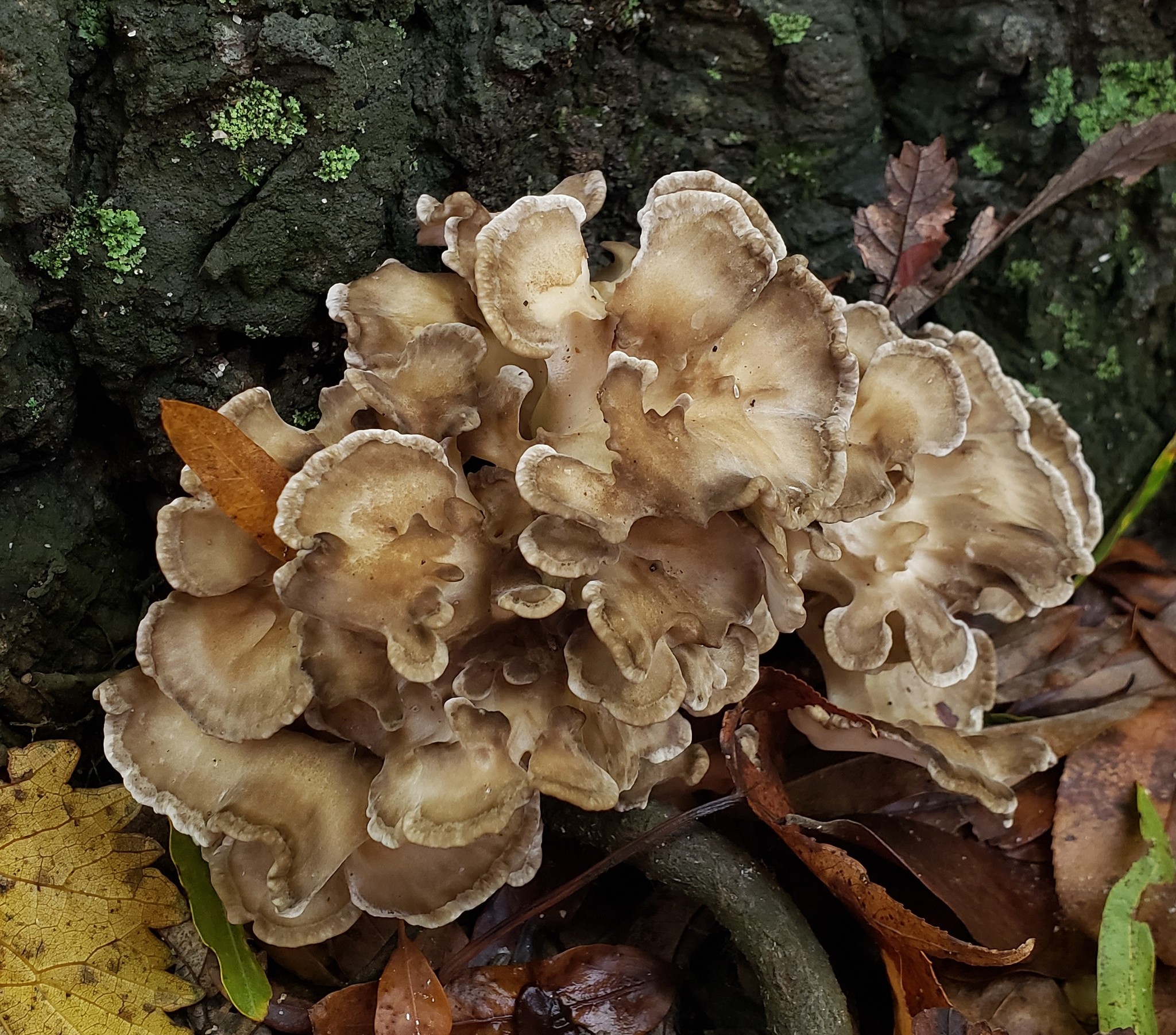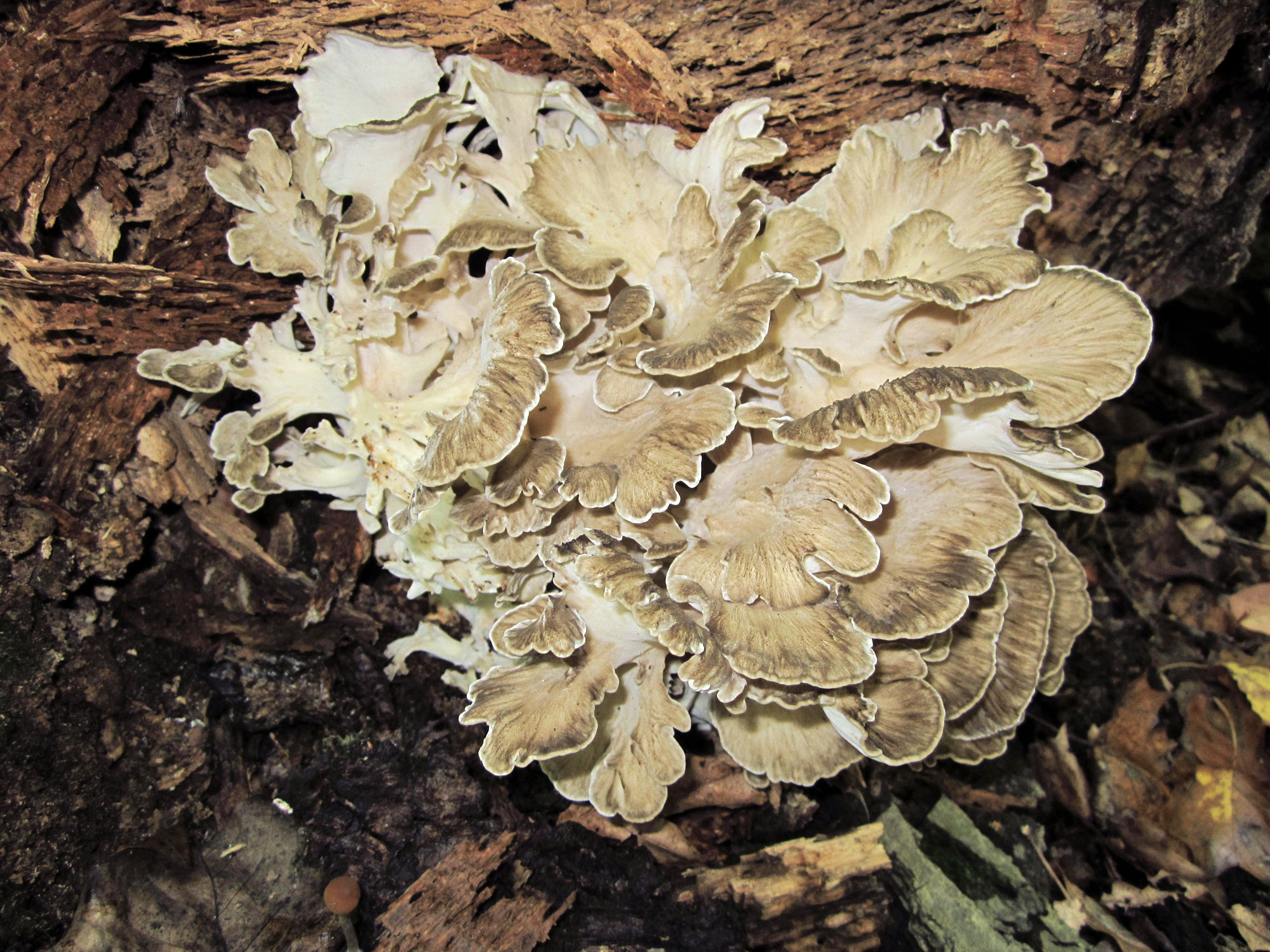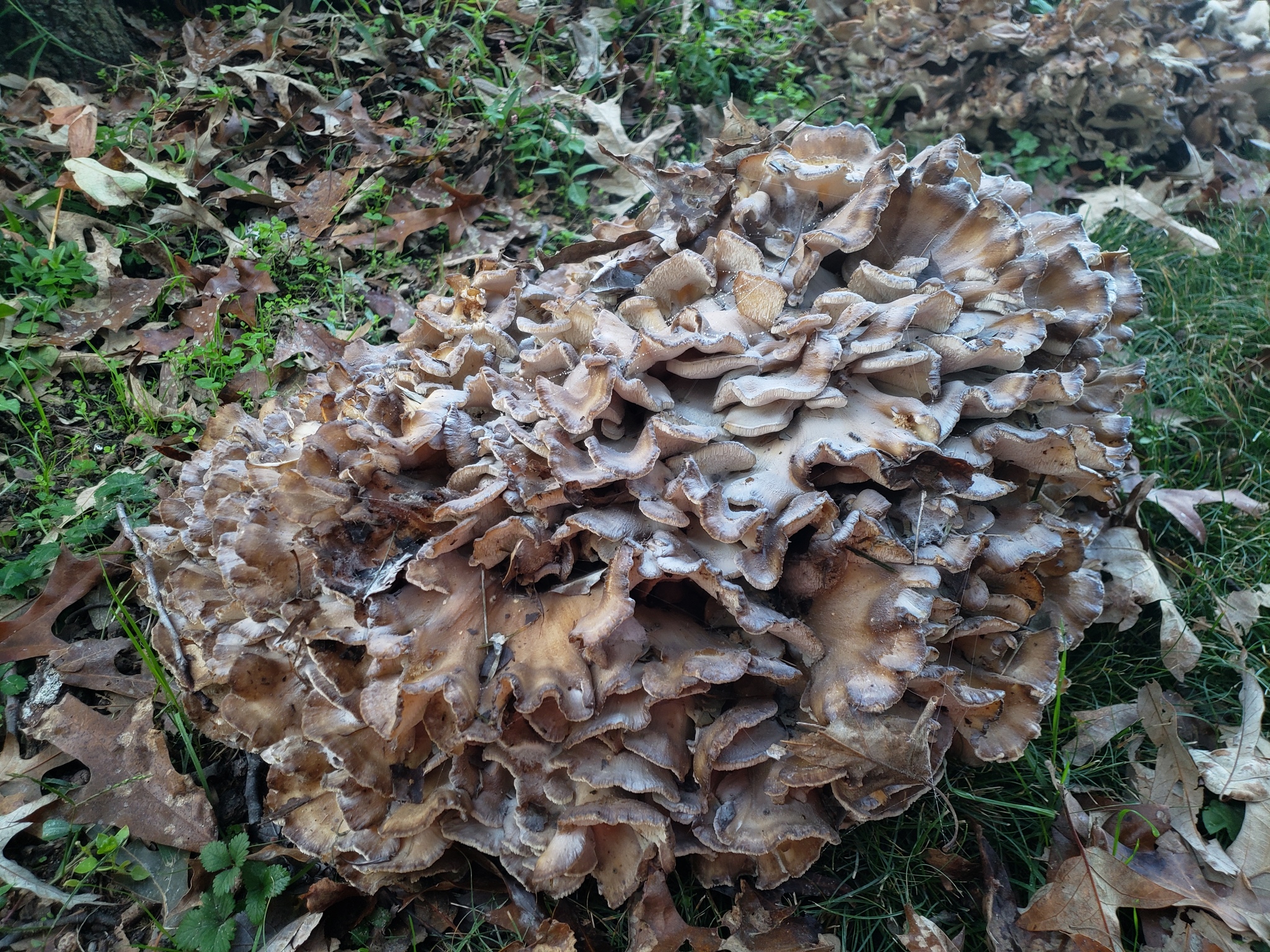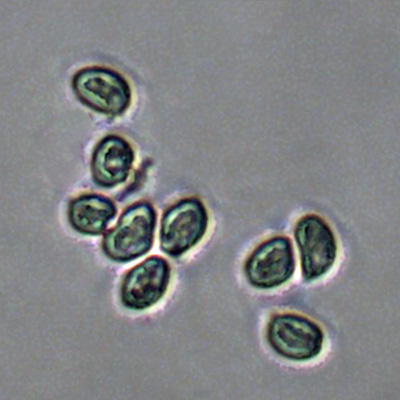Map Snapshot














80 Records
Status
Found on ground at the base of living or dead trees in open woods.
Description
Rosettes of flattened caps attached to a branching stalk. Caps gray/brown above, white pores below. Fruiting bodies may be up to two feet across and may weigh several pounds. Pores do not bruise blackish, which Black-staining Polypore (Meripilus sumstinei) does.
Seasonality Snapshot
Source: Wikipedia
This article needs additional citations for verification. (December 2019) |
| Maitake | |
|---|---|

| |
| Scientific classification | |
| Domain: | Eukaryota |
| Kingdom: | Fungi |
| Division: | Basidiomycota |
| Class: | Agaricomycetes |
| Order: | Polyporales |
| Family: | Meripilaceae |
| Genus: | Grifola |
| Species: | G. frondosa
|
| Binomial name | |
| Grifola frondosa | |
| Synonyms | |
| Grifola frondosa | |
|---|---|
| Pores on hymenium | |
| Cap is offset or indistinct | |
| Hymenium is decurrent | |
| Stipe is bare | |
| Spore print is white | |
| Ecology is parasitic | |
| Edibility is choice | |
Grifola frondosa (also known as hen-of-the-woods, maitake (舞茸, "dancing mushroom") in Japanese, ram's head or sheep's head) is a polypore mushroom that grows at the base of trees, particularly old growth oaks or maples. It is typically found in late summer to early autumn. It is native to China, Europe, and North America.[2]
Description
[edit]Like the sulphur shelf mushroom, G. frondosa is a perennial fungus that often grows in the same place for several years in succession. It occurs most prolifically in the northeastern regions of the United States, but has been found as far west as Idaho.[citation needed]
G. frondosa grows from an underground tuber-like structure known as a sclerotium, about the size of a potato. The fruiting body, occurring as large as 100 centimetres (40 inches), rarely 150 cm (60 in), is a cluster consisting of multiple grayish-brown caps which are often curled or spoon-shaped, with wavy margins and 2–10 cm (1–4 in) broad.[3] The undersurface of each cap bears about one to three pores per millimeter, with the tubes rarely deeper than 3 mm (1⁄8 in).[3] The milky-white stipe (stalk) has a branchy structure and becomes tough as the mushroom matures.[citation needed]
In Japan, the maitake can grow to more than 45 kilograms (100 pounds).
-
Maitake, a polypore mushroom
-
A large specimen found in New York state
-
Maitake mushroom tempura
Identification
[edit]This is a very distinct mushroom except for its cousin, the black staining mushroom, which is similar in taste but rubbery. Edible species which look similar to Grifola frondosa include Meripilus sumstinei (which stains black), Sparassis spathulata[4] and Laetiporus sulphureus, another edible bracket fungus that is commonly called chicken of the woods or "sulphur shelf."
Uses
[edit]The species is a choice edible mushroom.[5] Maitake has been consumed for centuries in China and Japan[6] where it is one of the major culinary mushrooms.[citation needed] The mushroom is used in many Japanese dishes, such as nabemono.[citation needed] The softer caps must be thoroughly cooked.[3]
Research
[edit]Although under laboratory and preliminary clinical research for many years, particularly for the possible biological effects of its polysaccharides, there are no completed, high-quality clinical studies for Grifola frondosa as of 2019[update].[6][7]
See also
[edit]References
[edit]- ^ McIlvaine, Charles; Robert K. Macadam; and Robert L. Shaffer. 1973. One Thousand American Fungi. Dover Publications. New York. 729 pp. (Polyporus frondosus, pp. 482-483 & Plate CXXVIII.)
- ^ Meuninck, Jim (2015-06-01). Jim Meuninck - Basic Illustrated Edible and Medicinal Mushrooms, pp. 13-14, Rowman & Littlefield, 1 Jun 2015. Rowman & Littlefield. ISBN 9781493014682. Retrieved 27 April 2017.
- ^ a b c Phillips, Roger (2010). Mushrooms and Other Fungi of North America. Buffalo, NY: Firefly Books. p. 300. ISBN 978-1-55407-651-2.
- ^ Meuninck, Jim (2017). Foraging Mushrooms Oregon: Finding, Identifying, and Preparing Edible Wild Mushrooms. Falcon Guides. p. 114. ISBN 978-1-4930-2669-2.
- ^ Miller Jr., Orson K.; Miller, Hope H. (2006). North American Mushrooms: A Field Guide to Edible and Inedible Fungi. Guilford, CN: FalconGuides. p. 420. ISBN 978-0-7627-3109-1.
- ^ a b "Maitake, Grifola frondosa". Drugs.com. 2 September 2019. Retrieved 19 December 2019.
- ^ "Maitake". Memorial Sloan Kettering Cancer Center. 2019. Retrieved 19 December 2019.
External links
[edit] Media related to Grifola frondosa at Wikimedia Commons
Media related to Grifola frondosa at Wikimedia Commons










